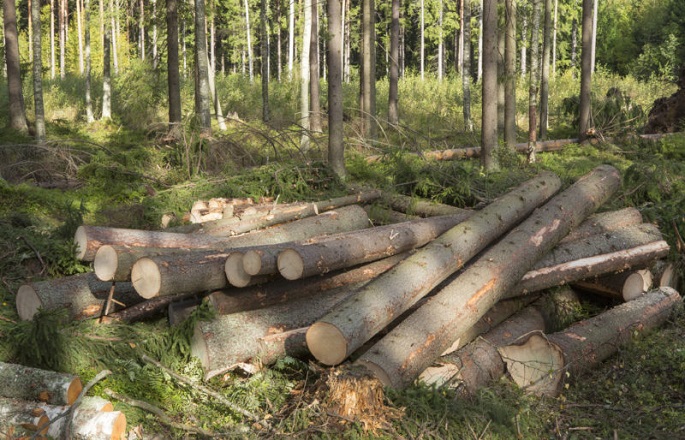Lumber prices increase by 6% in 2018
Published : 24 Feb 2019, 00:42
The year 2018 was characterised by a clear rise in the real stumpage prices of roundwood purchased from non-industrial private forests, said a press release issued by at the Natural Resources Institute Finland (Luke).
The real stumpage price level of roundwood rose by six per cent compared with the previous year. Pine logs fetched EUR 60.5 per cubic metre and spruce logs EUR 64.3 per cubic metre in standing sales. The stumpage price for pine pulpwood was EUR 17.6 and for spruce pulpwood EUR 19.6 per cubic metre.
“Last year, spruce logs was the most sold item in standing sales at 12.6 million cubic metres, followed by pine pulpwood at 11.5 million cubic metres. The share of standing sales of procurement of wood of the forest industries has been increasing. Wood sold by standing sales already accounted for 87 per cent of wood purchased from non-industrial private forests”, said Aarre Peltola, senior statistician at the Natural Resources Institute Finland (Luke).
The roadside prices also rose in 2018, but the change in prices was smaller than for standing sales. Compared with the situation a year before, the real roadside price level rose by two per cent.
The average roadside price of pine pulpwood was EUR 30.1 per cubic metre, with a roadside price of EUR 32.6 for spruce pulpwood and EUR 30.8 for birch pulpwood. Pulpwood accounted for 71 per cent of the delivery sales.
The price paid for roundwood from regeneration fellings is clearly higher than for that harvested by thinnings. In 2018, the price paid for logs harvested by means of regeneration felling was three per cent and that paid for pulpwood was 12 per cent higher than average. The price for logs from thinnings was 16 per cent and for pulpwood eight per cent lower than the average stumpage price. In the course of a first thinnings price was significantly lower than this.
“86 per cent of the logs purchased in standing sales and 49 per cent of the pulpwood purchased in standing sales originated from regeneration felling stands. This means that most of wood sold by standing sales originates from stands that are old enough for regeneration felling”, Peltola said.
The volume of wood purchased by the forest industry recorded in statistics was 51.5 million cubic metres. This shows an increase of about 20 per cent from the year before. Of this, logs accounted for 23.9 million cubic metres and pulpwood for 25.6 million cubic metres.


